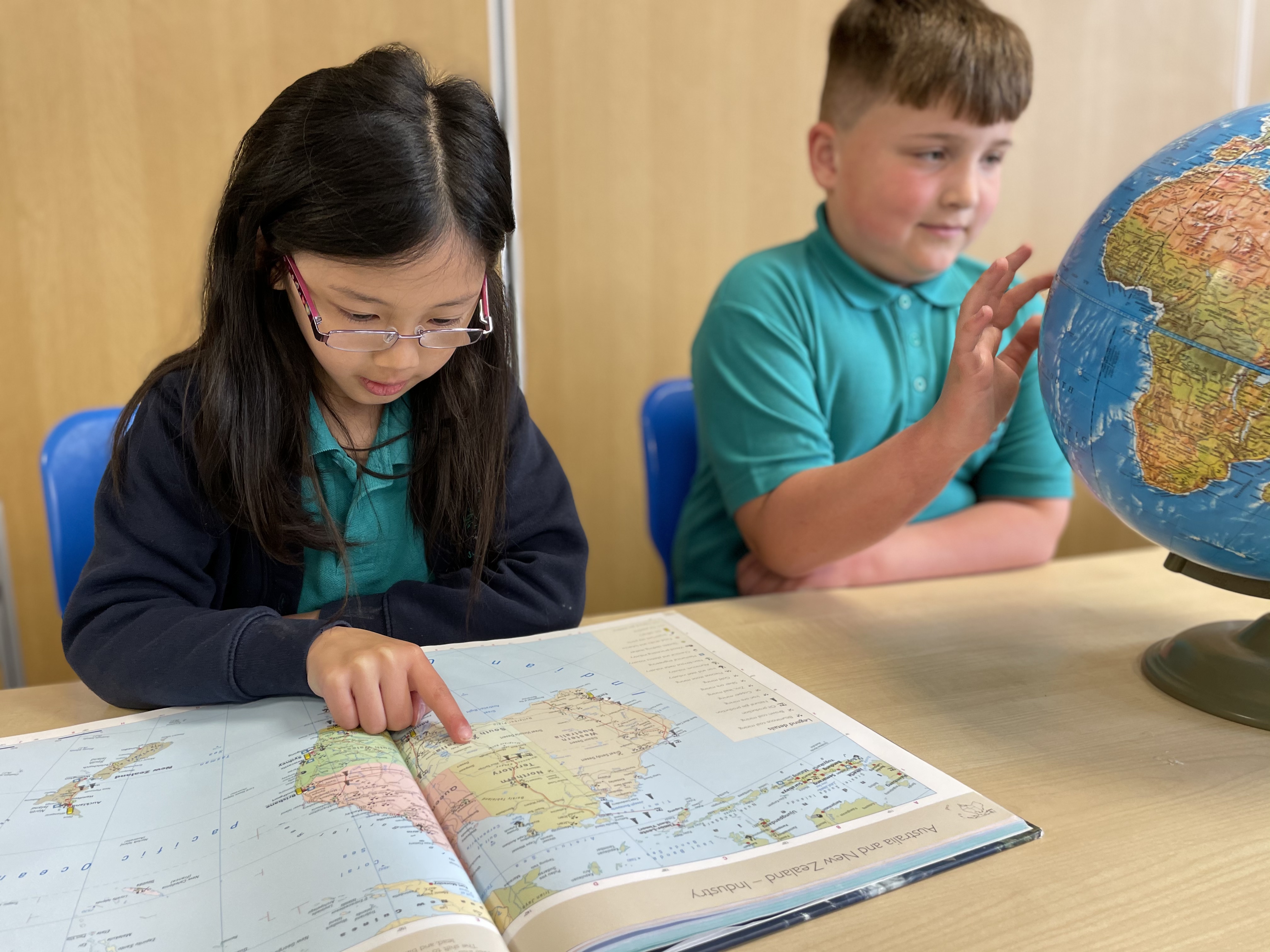Intent – what does the Geography curriculum intend to do?
At Ham Dingle, we understand the relevance and significance of geography, allowing children to understand the world around them and find their place in it. Therefore, we encourage children to think as geographers, developing a broad knowledge of the world and preparing them for their journey through education and beyond.
We aim to:
-
develop an understanding about the world, the United Kingdom and their locality;
-
develop an understanding of human and physical features;
-
enhance geographical skills such as analysing data;
-
interpret a range of geographical information using a range of resources.
From EYFS to Year 6, our geography curriculum, following close guidance to the National Curriculum sequence and content, enables all children to develop and acquire a range of progressive knowledge, skills and rich vocabulary. Our evidence-based geography curriculum has been designed to promote a mastery of procedural and disciplinary knowledge through deliberate practice, spaced retrieval and interleaving with other subjects. The curriculum also aligns to our wider school values through our curriculum drivers: collaboration, independence and character. Through high-quality teaching resources, rich learning modules and careful planning, we aim to enhance the children’s geographical knowledge and develop cultural capital.
Implementation – how is the curriculum implemented?
Geography is vital to understanding the world around us. The curriculum is knowledge rich and informed by key pedagogical research to enable all pupils to be engaged, retain key subject knowledge and develop the skills required to think like a geographer through our substantive concepts: locational knowledge, place knowledge, human and physical geography and geographical skills and fieldwork.
Within EYFS, geography is taught as part of a play-based curriculum through Understanding of the World, broken down into People, Culture and Communities and The Natural World, allowing children to make sense of the world around them through carefully planned provocations and adult-led activities. As a result, children are equipped with the foundational knowledge and skills necessary for Year One.
From EYFS to Year 6, knowledge is taught through a progressive modular approach, in which pupils study new content, skills and vocabulary in depth. Careful sequencing enable purposeful connections to prior learning in order to ease the forgetting curve and develop long-term retention; some modules are later revisited to allow for spaced retrieval. Through our substantive concepts, key geographical ideas are revisited, allowing for strong connections to built as these concepts are applied to a variety of studies.
Cultural capital is enriched further through trips, virtual links and learning experiences to create wider links, helping children to understand the relevance of geography in the real world.
Impact – what progress will children make?
At our school, we believe all our pupils have the potential to succeed. Through our high-quality teaching of geography alongside our knowledge-rich curriculum, we realise a community of enthusiastic geographers who develop a deeper understanding of cause and effect; place and location and the wide reaching impacts of our changing world. Children are confident in using a range of geographical resources and draw on these to strengthen connections and develop geographical skills.
Our children will leave prepared to apply their knowledge and skills across a range of different contexts; appreciate the relevance and importance to geography in everyday life and develop aspirations for future careers relating to geography.
Spaced Retrieval Practice Approach
Our curriculum is structured to introduce and revisit knowledge. We follow the principles of instruction, guided by understanding how the memory works and cognitive load theory.
Aims of the Geography Curriculum
The national curriculum for Geography aims to ensure that all pupils:
- develop contextual knowledge of the location of globally significant places – both terrestrial and marine – including their defining physical and human characteristics and how these provide a geographical context for understanding the actions of processes
- understand the processes that give rise to key physical and human geographical features of the world, how these are interdependent and how they bring about spatial variation and change over time
- are competent in the geographical skills needed to:
- collect, analyse and communicate with a range of data gathered through experiences of fieldwork that deepen their understanding of geographical processes
- interpret a range of sources of geographical information, including maps, diagrams, globes, aerial photographs and Geographical Information Systems (GIS)
- communicate geographical information in a variety of ways, including through maps, numerical and quantitative skills and writing at length.
Please click here to view our Geography Sequencing Road Map
Please click here to view our Geography Curriculum Map and Assessment Framework
Please click here to view our Geography One Page Overview
